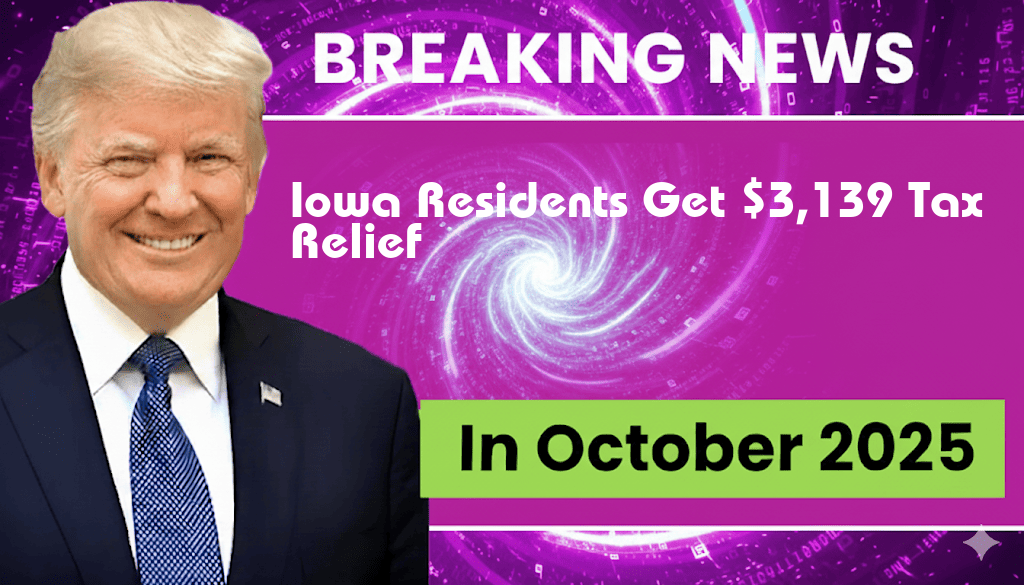Iowa Residents to Receive $3,139 Tax Relief from Trump’s Tax Plan
Residents of Iowa are set to benefit from a significant tax relief measure as part of the economic policies implemented during former President Donald Trump’s administration. A recent analysis reveals that the average taxpayer in Iowa will receive $3,139 in tax relief, stemming from the Tax Cuts and Jobs Act (TCJA) enacted in December 2017. This financial boost comes at a time when many Iowans are facing economic challenges, including inflation and rising living costs. The TCJA was designed to stimulate economic growth by lowering tax rates for individuals and businesses, and its effects are now being felt across the state.
Details of the Tax Relief
The tax relief for Iowa residents is a direct result of the TCJA, which aimed to simplify the tax code and reduce the burden on middle-class families. Key provisions of the tax plan include:
- Lower Tax Rates: The TCJA reduced the federal income tax rates across various brackets, providing immediate relief to taxpayers.
- Increased Standard Deduction: The standard deduction was nearly doubled, allowing taxpayers to shield more of their income from taxation.
- Child Tax Credit Expansion: The child tax credit was expanded, benefiting families with children and providing additional financial support.
Impact on Iowa’s Economy
The projected tax relief is expected to have a positive impact on Iowa’s economy. As residents receive more disposable income, it is anticipated that spending will increase, thereby stimulating local businesses. According to a report from the Forbes, increased consumer spending can lead to job creation and economic growth.
Broader National Context
Trump’s tax plan has been a point of contention among political leaders, with supporters arguing that it has led to increased economic growth and job creation, while critics claim it disproportionately benefits the wealthy. As states like Iowa see tangible benefits from the plan, discussions about tax policy remain a critical topic in American politics.
Challenges and Concerns
Despite the anticipated tax relief, there are concerns regarding the long-term sustainability of such tax cuts. Economists warn that while immediate benefits may be visible, the implications for federal revenue need careful consideration. The TCJA has contributed to an increase in the federal deficit, raising questions about future funding for essential services.
Public Reaction
The reaction from Iowans has been mixed. Many are welcoming the extra funds, viewing it as much-needed relief. However, some express concerns over the long-term effects of the tax cuts on public services. A recent survey indicated that:
| Opinion | Percentage |
|---|---|
| Support Tax Cuts | 58% |
| Oppose Tax Cuts | 35% |
| Undecided | 7% |
Conclusion
As Iowa residents prepare to benefit from an average tax relief of $3,139, the implications of Trump’s tax plan continue to unfold. With both positive economic impacts and ongoing debates surrounding fiscal sustainability, the topic of taxation remains a pivotal issue for the state and the nation. For more information on the Tax Cuts and Jobs Act and its effects, you can visit the Wikipedia page.
Frequently Asked Questions
What is the amount of tax relief that Iowa residents will receive?
Iowa residents will receive $3,139 in tax relief as a result of Trump’s Tax Plan.
How will the tax relief be distributed to residents?
The tax relief will be distributed directly to Iowa residents through their income tax returns, allowing them to keep more of their earnings.
When can Iowa residents expect to see this tax relief?
Iowa residents can expect to see the $3,139 tax relief applied in their upcoming tax filings, typically during the next tax season.
What are the potential benefits of Trump’s Tax Plan for Iowa?
The potential benefits include increased disposable income for residents, which can boost local economies and stimulate spending.
Are there any eligibility requirements for receiving the tax relief?
Eligibility for the tax relief generally depends on income levels and tax filing status, so residents should consult the details of the plan to ensure they qualify.
